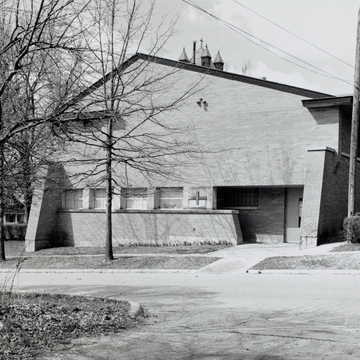Like all of Byrne's post-World War II churches and schools, this one does not directly reveal his earlier involvement with the Prairie mode, or with Expressionism in the late 1920s and 1930s. In his design for the Sacred Heart School, Byrne seems to have used the traditional elements of architecture, then abstracted them, and finally arranged them in a loose fashion into a single composition. The gable roof is here but its ridge is off-center; there are buttresses, but they end up being extensions of the lateral walls; some of the roof edges are essentially flush with the wall surfaces below, others are extended. Though much is indeed going on within this composition, it ends up being calm and reticent.
You are here
Sacred Heart School Building
If SAH Archipedia has been useful to you, please consider supporting it.
SAH Archipedia tells the story of the United States through its buildings, landscapes, and cities. This freely available resource empowers the public with authoritative knowledge that deepens their understanding and appreciation of the built environment. But the Society of Architectural Historians, which created SAH Archipedia with University of Virginia Press, needs your support to maintain the high-caliber research, writing, photography, cartography, editing, design, and programming that make SAH Archipedia a trusted online resource available to all who value the history of place, heritage tourism, and learning.

